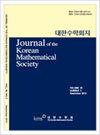关于惯性流形存在性的注解
IF 0.5
4区 数学
Q2 MATHEMATICS
引用次数: 0
摘要
惯性流形通常被构造为从低傅立叶模式到高傅立叶模式的函数的图,并且用于为此目的考虑后向有界(在时间上)解。我们在这里证明了这种解的唯一性的证明在惯性流形的存在性理论中是至关重要的。为了避免收缩原理,我们主要应用阿尔泽拉-阿斯科利定理和拉普拉斯变换分别证明它们的存在性和唯一性。包括一个非自伴例子,它与Navier-Stokes方程的Kwak变换后产生的微分系统有关。本文章由计算机程序翻译,如有差异,请以英文原文为准。
Remarks on the existence of an inertial manifold
An inertial manifold is often constructed as a graph of a function from low Fourier modes to high ones and one used to consider backward bounded (in time) solutions for that purpose. We here show that the proof of the uniqueness of such solutions is crucial in the existence theory of inertial manifolds. Avoiding contraction principle, we mainly apply the Arzela-Ascoli theorem and Laplace transform to prove their existence and uniqueness respectively. A non-self adjoint example is included, which is related to a differential system arising after Kwak transform for Navier-Stokes equations.
求助全文
通过发布文献求助,成功后即可免费获取论文全文。
去求助
来源期刊
CiteScore
1.20
自引率
16.70%
发文量
0
审稿时长
6-12 weeks
期刊介绍:
This journal endeavors to publish significant research of broad interests in pure and applied mathematics. One volume is published each year, and each volume consists of six issues (January, March, May, July, September, November).

 求助内容:
求助内容: 应助结果提醒方式:
应助结果提醒方式:


